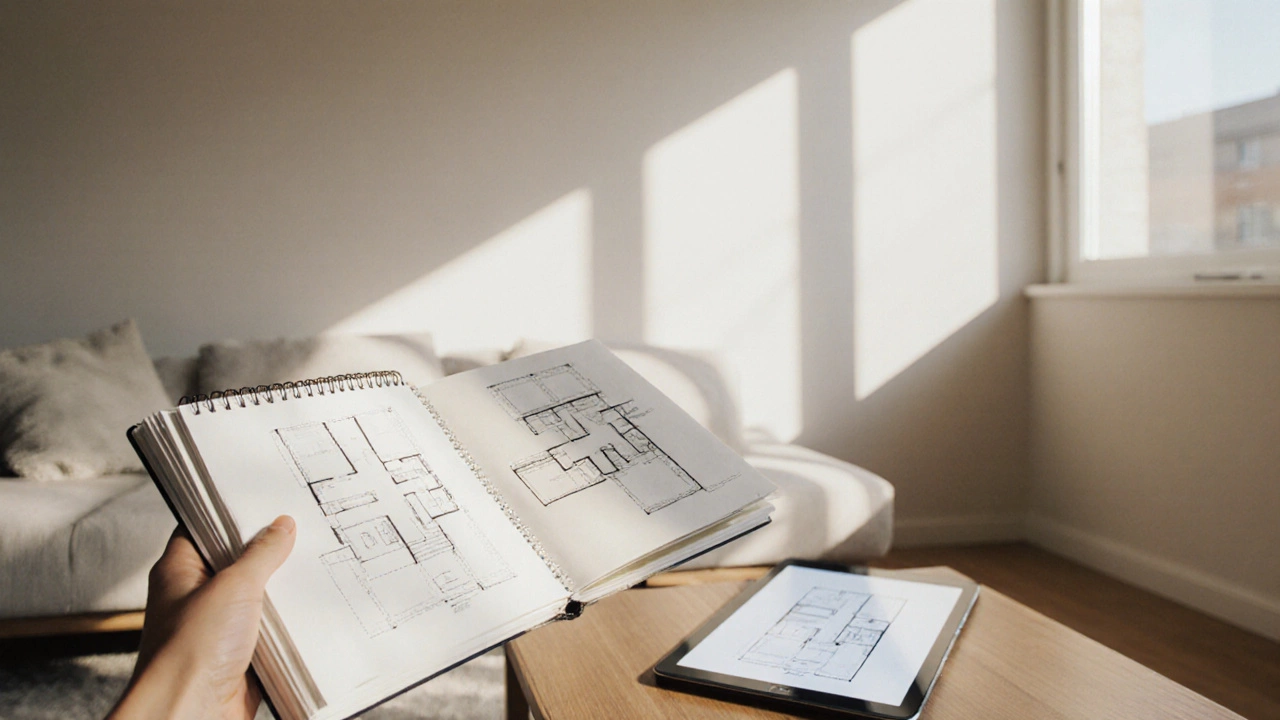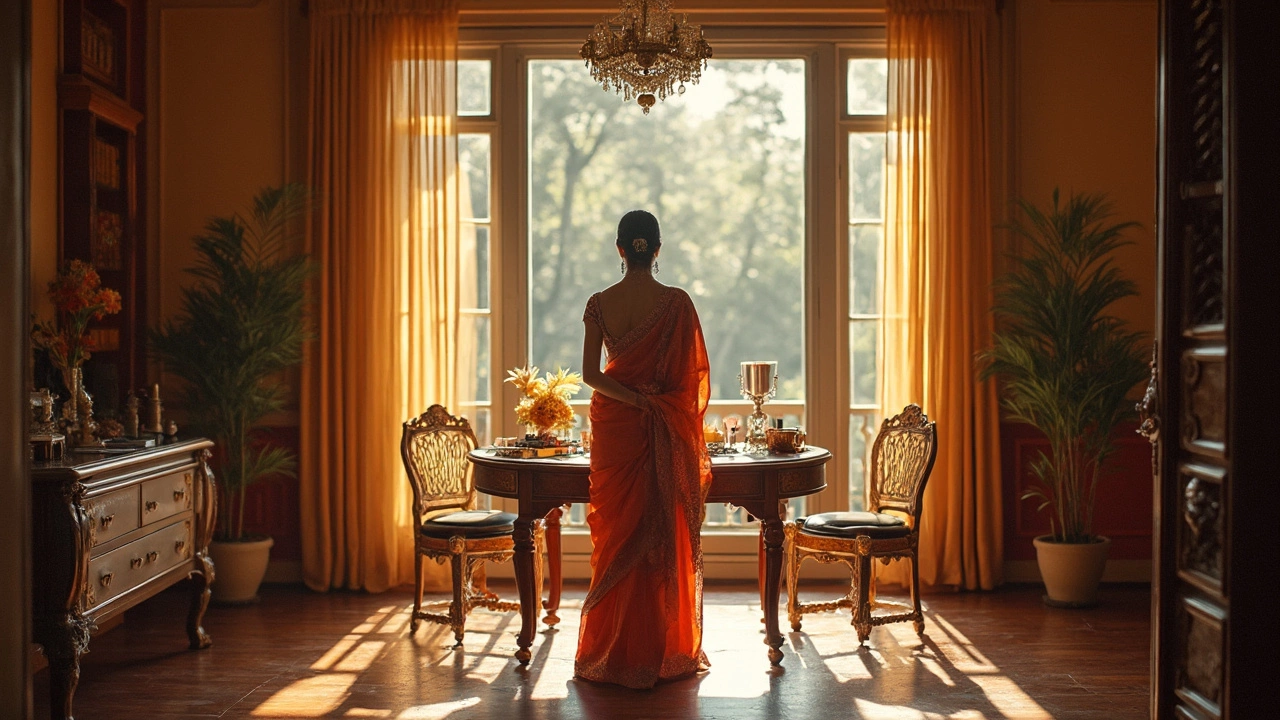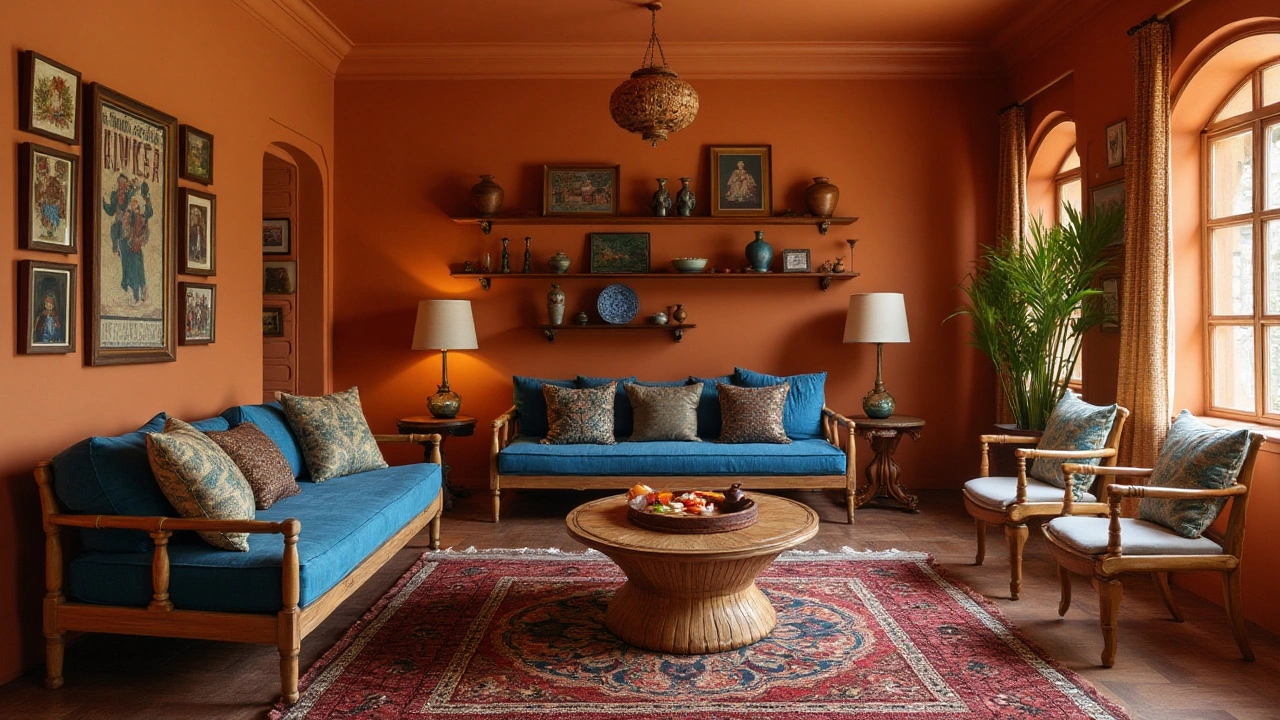Color Palette Generator
Create Your 3-Color Palette
Choose a neutral base and discover complementary accent and highlight colors based on the article's proven system.
Neutral Base
Accent Color
Highlight Color
Pro Tip: Use the dominant neutral for walls and large surfaces, accent for textiles, and highlight for accessories.
How to Use This Palette
Perfect for your space
Based on the article's guidelines:
- Use for walls and large furniture
- Apply to cushions, rugs, or artwork
- Add through accessories like lamps or vases
Ever feel stuck staring at a blank wall, wondering why you can’t seem to put anything together? You’re not alone - many people think they lack a natural “style” and give up before they even start. The good news? Decorating is a set of choices you can learn, not a mystical talent. This guide walks you through concrete steps, from picking a color palette to arranging furniture, so you can create a space that feels right even if you think you have no style.
Quick Takeaways
- Start with a neutral base - it hides indecision and lets you add personality later.
- Limit your palette to three colors to keep things cohesive.
- Choose one or two statement pieces and build the room around them.
- Lighting can change a room’s mood more than any paint color.
- Use accessories sparingly; a few well‑placed items are more impactful than a cluttered shelf.
Decorating is the process of arranging furniture, colors, lighting and accessories to create a functional and aesthetically pleasing environment doesn’t require an innate sense of style. Think of it as solving a puzzle with pieces you can move around until they fit.
1. Take Stock of What You Have
Before you buy anything, make a quick inventory. Grab a notebook or a phone note and list every major item in the room - sofa, coffee table, rug, artwork. Next, assess each piece’s condition, style, and color. This simple audit does two things: it shows you what you can keep, and it reveals gaps you need to fill.
For a clearer picture, create a layout plan that sketches the room’s dimensions and the placement of each item. Even a rough sketch on a napkin helps you spot awkward spaces, such as a long empty wall or a corner that never gets used.
2. Choose a Simple Color Palette
Color is the quickest way to give a room a mood. If you’re unsure, stick to a three‑color rule: one dominant neutral (white, gray, taupe), one secondary accent (soft blue, sage green, warm terracotta), and one highlight (mustard, navy, or black). This formula keeps the look unified without demanding a bold decision.
Here’s a handy cheat sheet for popular neutral bases and accent pairings:
| Neutral Base | Accent Color | Suggested Highlight |
|---|---|---|
| Warm White | Sage Green | Brass |
| Cool Gray | Dusty Blue | Matte Black |
| Soft Taupe | Terracotta | Deep Navy |
Apply the dominant neutral to large surfaces - walls, large rugs, or major upholstery. Use the accent on smaller textiles, cushions, or a painted accent wall. The highlight should appear in accessories like lamps, vases, or hardware.
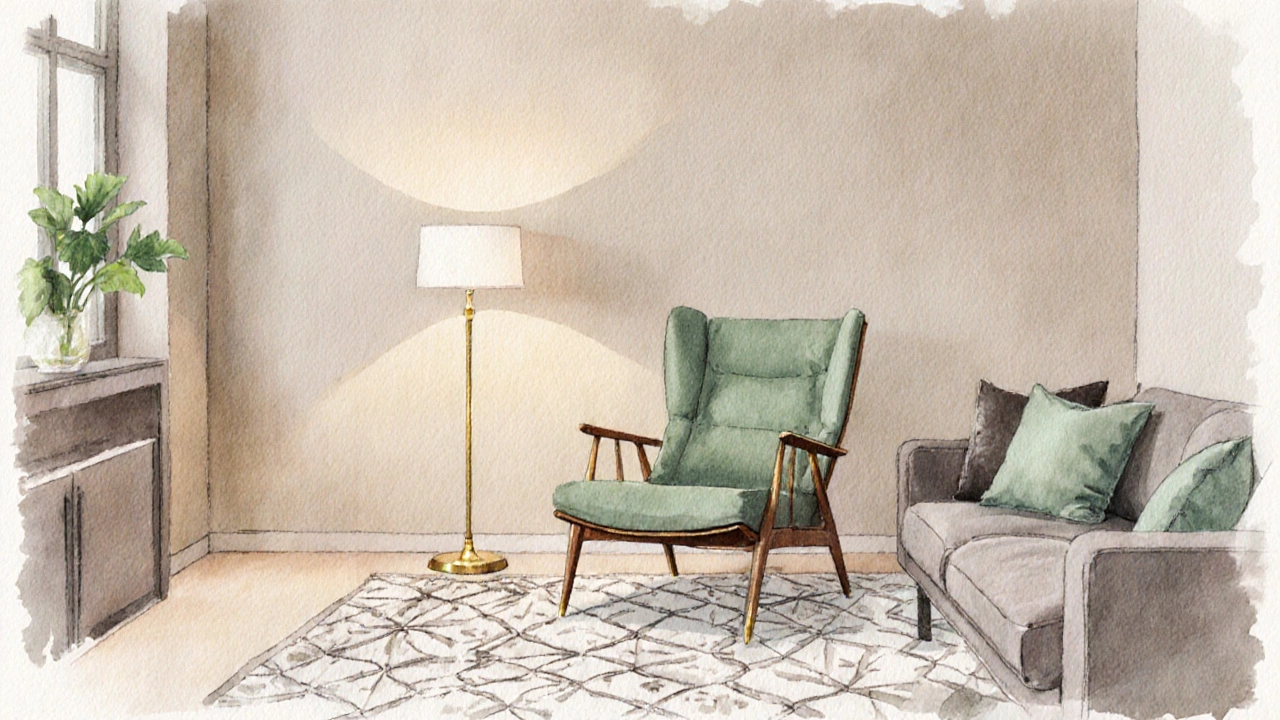
3. Pick One or Two Statement Pieces
A “style‑less” room can feel anchored by a single eye‑catching element. This could be a vintage armchair, a bold patterned rug, or a large piece of artwork. The key is to select something you genuinely love, because it will set the tone for the rest of the room.
When you’ve chosen the statement piece, make sure its style doesn’t clash with existing items. If you have a sleek, modern sofa, pair it with a mid‑century modern chair rather than a heavily carved antique. The furniture includes sofas, chairs, tables and storage units that define the functional layout of a space you keep should complement the new focal point rather than compete with it.
4. Master Lighting Basics
Lighting is often the most overlooked layer, yet it can make a drab room feel vibrant or a bright room feel cozy. Aim for three types of light: ambient (general ceiling or floor lamps), task (reading lamps, under‑cabinet lights), and accent (spotlights for artwork, LED strips for shelves).
When you’re on a tight budget, start with a warm‑white LED bulb (about 2700‑3000K) for ambient lighting - it creates a pleasant, inviting glow. Add a dimmer switch if possible; the ability to tone down light instantly changes the room’s atmosphere.
5. Use Accessories Wisely
Accessories are the finishing touches, but they can quickly become visual noise. Follow the “one‑three‑five” rule: one large piece (like a floor lamp), three medium items (such as decorative trays or books), and five small accents (candles, small plants, picture frames).
Choose accessories that echo your accent or highlight colors. A navy vase, brass candle holders, or a terracotta‑glazed mug can reinforce the palette without overwhelming the eye.
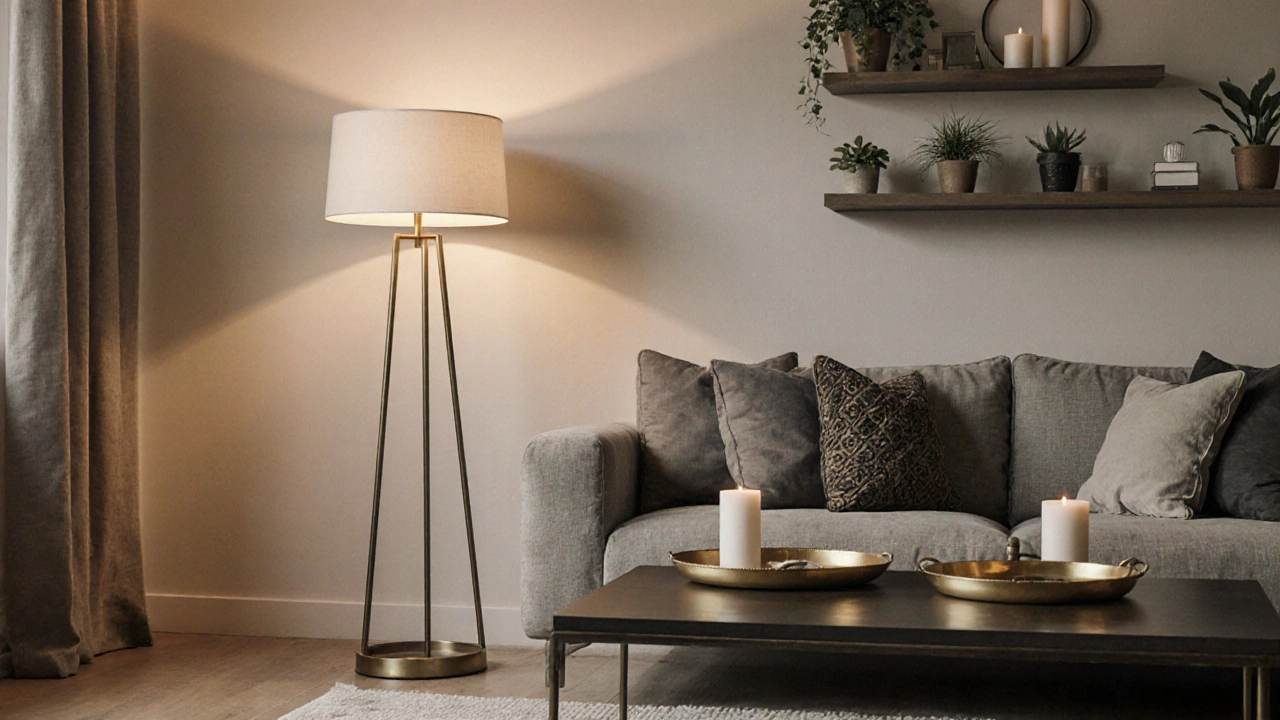
6. Arrange Furniture for Flow
Good layout planning ensures that traffic pathways are clear and that each zone serves its purpose without crowding follows a natural flow. A simple rule: leave at least 2‑3feet of walking space between pieces.
If you have a rectangular room, try the “floating furniture” technique - pull the sofa away from the wall by a foot or two, and place a side table behind it. This creates depth and makes the room feel larger.
7. Stick to a Budget and DIY Where Possible
Decorating on a shoestring doesn’t mean you have to settle for cheap. Identify where you can DIY: repaint an old dresser, reupholster a chair with fabric from a discount store, or swap out hardware on cabinets.
Allocate your budget in percentages: 40% for primary pieces (sofa, rug), 30% for paint or wallpaper, 20% for lighting, and 10% for accessories. Tracking expenses in a simple spreadsheet prevents overspending and helps you see where a DIY swap could save money.
8. Quick Checklist Before You Finish
- Have you defined a three‑color palette?
- Is there one statement piece that anchors the room?
- Do you have at least three layers of lighting?
- Are accessories limited to the one‑three‑five rule?
- Is the furniture arrangement allowing clear traffic flow?
- Did you stay within your budget allocation?
Run through this list once you think you’re done. If anything feels off, tweak it - decorating is an iterative process, not a one‑time decision.
Frequently Asked Questions
Can I redecorate a room without buying new furniture?
Absolutely. By changing paint, swapping textiles, adding new lighting and rearranging existing pieces, you can give a room a fresh look without a big purchase.
How long should I spend on each step of the decorating process?
It varies, but a good rule of thumb is 20% on inventory and planning, 30% on color and paint, 20% on furniture arrangement, 15% on lighting, and the remaining 15% on accessories and final tweaks.
What if I don’t like my chosen color palette after painting?
Test paint on a small wall section first. If you’re unhappy, you can repaint or use large wall art and textiles to introduce new tones without redoing the whole room.
Is it okay to mix modern and vintage pieces?
Yes, mixing eras adds character. Keep the color palette consistent and let the statement piece guide the overall vibe to avoid clashing styles.
How can I make a small room feel larger?
Use light, neutral colors on walls, incorporate mirrors, choose furniture with legs (so you see more floor space), and keep floor clutter to a minimum.
